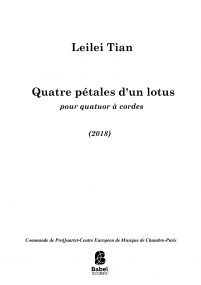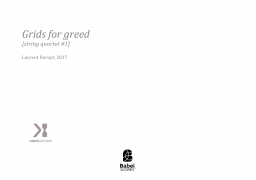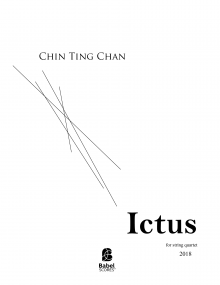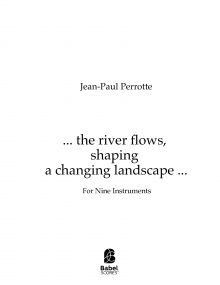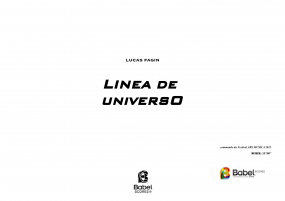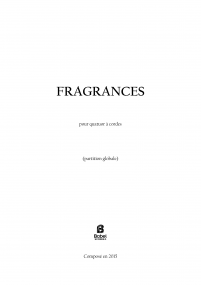Tinnitus
ISMN : 979-0-2325-5149-4
- Identifiez-vous pour créer une liste
Tinnitus is the medical term for noises heard within the brain or head, such as hissing, roaring, ringing, or “crickets,” when there are no external physical sounds present. It is estimated that 50 million American adults currently experience some degree of tinnitus.
For the majority of these 50 million, tinnitus is no more than an occasional nuisance. However, the volatility of tinnitus means the condition can change from day to day—even hour to hour—as the noises can vary in location, pitch, and volume, turning suddenly from a low roar to a high squeal or whine. In more mild manifestations, these noises can be annoying or distracting, and when they become severe, may cause serious disruptions, such as anxiety, loss of concentration, and sleep interruption.
In March 2018, I was diagnosed with tinnitus. In my head, I hear an indefinite pedal consisting of very high-pitched textures. These textures shift to higher pitches when I consume caffeine or sweets. The noises also become louder and more dissonant when I experience stress. Sometimes, the noises in my head wake me up in the middle of the night do not allow me to go back to sleep for quite a while. I have asked for counsel from multiple doctors, but they are helpless to help me. In the darkest of these times, I accepted tinnitus as a parasite to my existence.
About six months after my diagnosis, and tired of feeling like a victim of my own brain, I decided to use my tinnitus as inspiration and foundation for composition. I found the instruments closest to the noises in my head were string instruments, particularly violin, viola, and the high- pitch registers of cello.
In my piece Tinnitus, I decided to use the indefinite pedal in my brain as a fluctuating background, fading in and out and layered beneath dynamic elements of resonance, volume, colors, textures, and timbre as alternating middle and foreground materials. My composition uses the sound of my indefinite pedal as a subject which transforms into other materials before morphing back to itself. In this way, Tinnitus is formed by a series of timbral transformational variations, and the presence of resonance, silence, and volume supports the function of timbre in this piece. Essentially, Tinnitus is a timbre-based composition that uses timber as the primary element of form.
I believe that if I remain passionate, committed, and curious about a goal, there is a power in the universe that will ultimately support me in achieving that goal. I believe in perseverance, and making the best of seemingly unpleasant events and hopeless situations. As a composer, I am committed to compositions that are both high quality and organic and authentic musical expressions. I have come to accept tinnitus as a gift, as part of my destiny, in building authentic sonic worlds in my compositions. I will use my symptoms as a source of inspiration to compose emotionally and intellectually engaging pieces for my listeners.
Pages - 30



